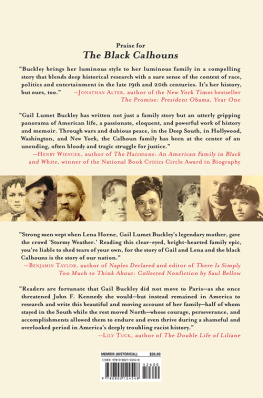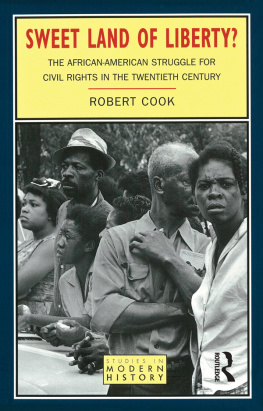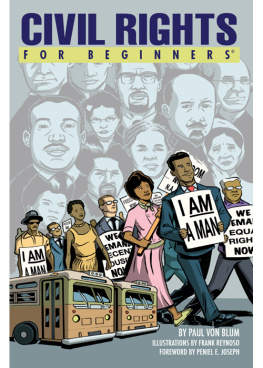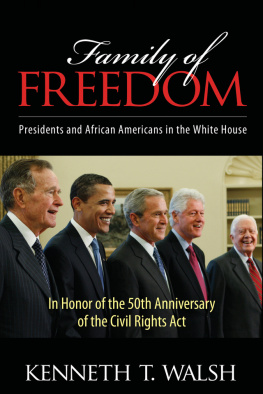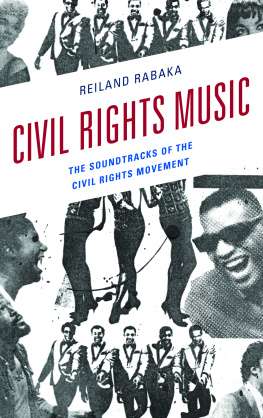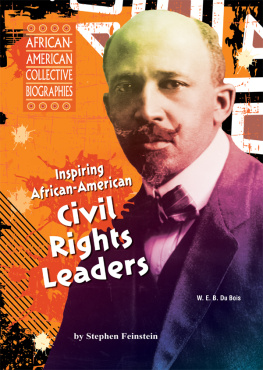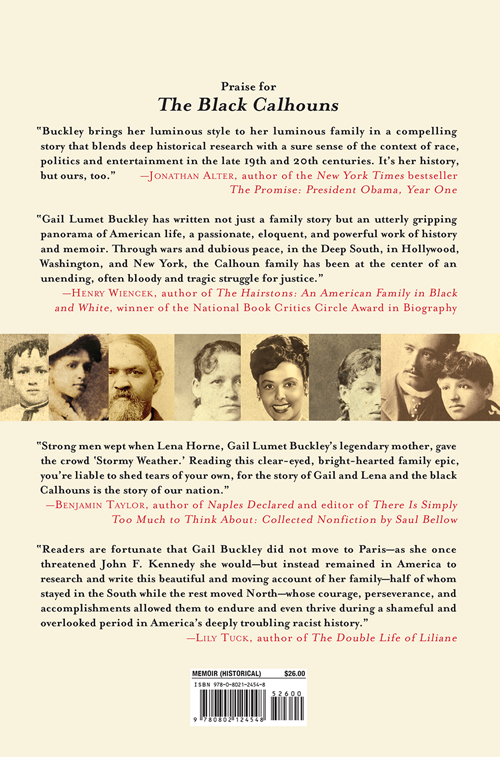I have many people to thankespecially my earliest reader, Kevin Buckley, for his encouragement; Lynn Nesbit, my wonderful and supportive agent and friend; and my brilliant editor and friend Joan Bingham, at Grove Atlantic, who made everything better. I also want to thank Joans Grove Atlantic colleaguesespecially Amy Vreeland for her guiding hand, Charles Woods for his art direction, and Morgan Entrekin, Judy Hottensen, and Deb Seager for their enthusiasm and publishing expertise. And special thanks to Nancy Tan for her copyediting.
I want to thank Henry Foner, John Merony, and Ramona Brewer Moloski for enlightening me on the Blacklist days. My thanks also go to Ken Gregory in Atlanta for his knowledge of the Ezzard family. And special thanks to Patrick Callihan for his research assistance.
And of course this book could not have been written without the help and support of my Calhoun cousins: Catherine Nash Harris, Karen Harris Reynolds, Harriet Nash Chisholm, Cheryl Chisholm, Hallie Hobson, and Christopher Lee.
With gratitude to all.
South/Reconstruction, 18651876
MORNING/1860s
T HE STORY of Reconstruction is really the story of what almost was, wrote W. E. B. Du Boiswho first lived Reconstruction, then studied it. His book Black Reconstruction in America, 18601880, published in 1935, makes statistics breathe and reads like a novel. Du Bois called Reconstruction the mythic time for blacks. It was a window of American opportunity that opened in 1865, the year of the Thirteenth Amendment, and closed in 1876, the election year that saw the final betrayal of blacks by the Republican Party. That single decade, 18651876, between the end of slavery and the arrival of Jim Crow, represents the arc in time called Reconstruction, when for the first time in the South, under the protection of the federal government, blacks were American citizens and all public discrimination was illegal. There were laws to protect black civil rightsand anyone could learn to read and write. This different world, as Du Bois called it, arrived with the passage of the three great Reconstruction Amendments to the Constitution, the Thirteenth, Fourteenth, and Fifteenth, also known as the Civil War Amendments, which really freed the slaves and made them citizens and voters. This was the issue: Alabama, Florida, and Louisiana had almost as many black Republicans as white Democrats, and Mississippi and South Carolina had more black Republicans. This was the reality of Reconstructionthe political tables were turned. And this is what the white Democrats of the South were determined to destroy.
Southern cruelty in the form of Black Codes brought Reconstruction to the South. Black Codeslaws regulating black life and employment that sprang up all over the South right after Appomattoxwere worse than slavery, because black life now had no value at all. During slavery, blacks could be abused or killed with impunity by their owners; under Black Codes they could be abused or killed with impunity by any white. Annual work contracts, with pay at the end of the year, were Black Code staples. In reality, because of deductions for rent and provisions, pay was never seen. The company store principle created far more hungry children than the plantation ever did. And ad hoc Black Code enforcers, like the Ku Klux Klan, born in 1865, terrorized the Southern countryside. But from 1865 to 1872, the old Confederacy was occupied by troops of the U.S. Armysent specifically to protect the rights of former slaves, now citizens and Republican voters, from vengeful whites.
The black Calhouns of Coweta County, Georgia, a small, wealthy community outside Atlanta, were fortunate to have escaped both the Black Codes and the KKK. The black Calhouns came from the small portion of the Southern black population that was both literate and urban. Atlanta was a slave-owning society, but it was also a city whose white business leaders, even in 1865, were almost as interested in Yankee investments as in upholding the sacred cause of white supremacy. Run by businessmen, not planters, Atlanta, unlike the rest of Georgia, was concerned with its image outside the South. Georgia was no more and no less viciously racist than Mississippi or Alabama, but Atlanta always wore the smiling face of moderation. Hating confrontations and bad publicity, Atlanta was one of the safest cities in the South for middle-class blacks. And certain middle-class mendoctors, lawyers, businessmen, and entrepreneurswere as independent of white oversight as any black men in the South could be. Unlike the rest of the South, Atlanta rewarded black ambitionas long as it was not political.
Calhoun was an important name in Georgia. There was a town called Calhoun in the northwestern part of the state near the Alabama border and a street named Calhoun in Atlanta. There was a Governor Calhoun and a Mayor Calhoun of Atlanta. The black Calhouns had been owned by Dr. Andrew Bonaparte Calhoun (A. B. Calhoun), a relative of the former senator and vice president John C. Calhoun, slaverys greatest apologist. A physician and sometime politician, Dr. Calhoun, one of the richest and most powerful men in the state, was a Coweta County delegate to Georgias Secession Conventionand proudly displayed the pen he had used to sign Georgias Ordinance of Secession. A. B. Calhoun, born in 1809 in South Carolina, entered medical school in Charleston in 1829. After his 1831 graduation, he moved to Decatur, Georgia, and became a circuit-riding doctor. A year later he settled in Coweta County, in the town of Newnan. Serious about his profession, in 1837 Calhoun spent a year abroad, attending lectures and clinics in the great hospitals of London and Paris. When he returned to Georgia, his friends pushed him to serve a term in the state legislature. Before 1865 Coweta Countys population was almost evenly divided between black and white. The blacks were all slaves, of course. Besides homes in Newnan and Atlanta, Dr. Calhoun had a large cotton plantation, the Calhoun Quarter, in the southwest part of Coweta County under the charge of an overseer. But his main family home was the stately mansion, set in a grove of forest oaks on Greenville Street in Newnan, that he built from 1839 to 1840. Newnan, Georgia, was known as the City of Homes, thanks in great part to A. B. Calhouns mansion.
Moses Calhoun; his sister, Catherine Sinai, known as Siny; and his mother, Nellie, were Coweta County natives. Moses was named for A. B. Calhouns uncle, Moses Waddel, and Catherine Sinai was partly named for his wife, Catherine Calhoun Waddel. The 1850 Slave Schedule (slave census) for A. B. Calhoun listed Moses as a twenty-year-old maleand M for mulatto. A. B. Calhoun may well have been a father figure to Moses. Like many Southern slave families, the black Calhouns were intertwined with the white Calhouns: Moses was the butler, Nellie was the cook, and Siny was the nursemaid. With her perfect oval face and large, lustrous eyes, Siny Calhoun looked like a beautiful Black Madonna. Her father was generally believed to have been a white man: Judge William Ezzard, a three-time mayor of Atlanta and a good friend of A.B.s. Moses father may well have been Ezzard also. Moses was born in 1829 in Creek Indian territory, before Atlanta existed. He was considered a fortunate slave. While house slaves were under constant scrutiny, they usually led a more comfortable life than other human property. And butlers were the most important house slaves of all. The coachman, blacksmith, and carpenter were important

